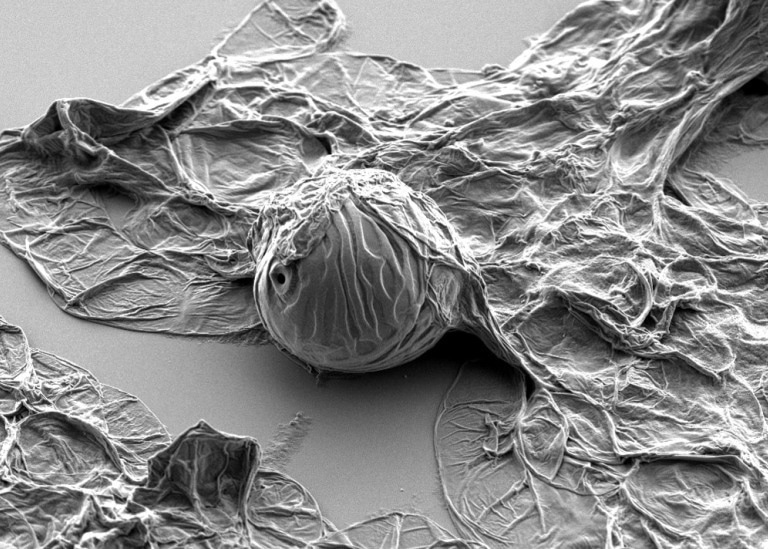Reviewed by Danielle Ellis, B.Sc.Sep 22 2022
According to a recent study, it is possible to genetically alter the lignin chemistry of plants to improve their ability to recover from drought without compromising the size of the plant or seed production. Future climatic challenges could be addressed by using these findings in both forestry and agriculture.
 Plant pipe cell reinforced with lignin is highly resistant to negative pressure in contrast to the other flattened cells around. Photo using Scanning Electron Microscop. Image Credit: Cheng Choo Lee
Plant pipe cell reinforced with lignin is highly resistant to negative pressure in contrast to the other flattened cells around. Photo using Scanning Electron Microscop. Image Credit: Cheng Choo Lee
About 30% of the carbon on the entire planet is contained in lignin, the second most prevalent biopolymer. Plants cannot grow or survive without lignin; it permits them to conduct water and stand upright.
Plants are made of many different cells, some of them are reinforced with lignin and assemble to each other to form a pipe that conducts water, like a straw to drink your cocktail. Lignin is so strong that the pipe cells can resist vacuum while other cells are flattened.”
Delphine Ménard, Head, Cell Cultures Platform, Department of Ecology, Environment and Plant Sciences, Stockholm University
Existence of a lignin “chemical code”
For a very long time, experts rejected the idea that lignin possessed a “code” similar to DNA or proteins. This outdated theory has been refuted by researchers led by DEEP in association with the Department of Materials and Environment Chemistry at Stockholm University (MMK) and the Tokyo University of Agriculture and Technology (TUAT), who have also contributed to the research.
They demonstrated how each cell modifies its lignin in accordance with this “chemical code” to function properly and withstand stressors. These findings, which have been published in the journal The Plant Cell, could help with future climatic concerns in forestry and agriculture.
It takes only one simple chemical change, just one hydrogen atom apart from alcohol to aldehyde to make plants highly resilient to drought in conditions where alcohol-rich plants would all die.”
Edouard Pesquet, Study Senior Author and Associate Professor, Molecular Plant Physiology, Stockholm University
It is interesting to note that Professor Shinya Kajita of TUAT demonstrated that such significant increases in lignin aldehydes can happen naturally in the wild. For instance, in the Japanese silk business, silk caterpillars have traditionally used and appreciated mulberry with the highest levels of lignin aldehyde.
Possibilities to improve crops and tree
Pesquet added, “These results revise our understanding of lignin and plant water conduction, but also open great possibilities to use the lignin code to improve crops and trees to face water availability problems. The modification of lignin chemistry at the single cell level is ultimately the mechanism enabling plants to grow, hydrate and resist climate change stresses.”
Source:
Journal reference:
Ménard, D., et al. (2022). Plant biomechanics and resilience to environmental changes are controlled by specific lignin chemistries in each vascular cell type and morphotype. The Plant Cell. doi/10.1093/plcell/koac284/6709353